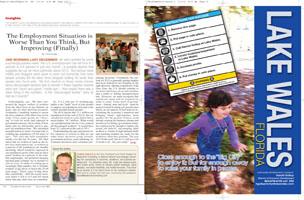
One morning last December, we were greeted by some surprisingly positive news: the U.S. unemployment rate fell from 9.1 percent to 8.6 percent in just one month—a sizeable decline that suggests we can be more optimistic about 2012. But various news media and bloggers were quick to point out (correctly) that more people actually left the labor force (stopped looking for work) than people who found jobs. My first reaction to these media articles about discouraged workers was to wonder if these negative caveats were just “doom and gloom” media spin – that maybe there was a silver lining in the numbers. Is the “discouraged worker” story as bad as it sounds?
Unfortunately, yes. We have witnessed the largest outflux of workers from the labor force in my lifetime (at least), like no other previous recession. Avalanche Consulting wanted to assess the true condition of the labor force not in terms of how many people are “choosing” to look for work (and captured in government surveys), but in terms of how many jobs we historically need to support our population base. We calculated unemployment in terms of actual jobs to working-age population (25-64 years of age). This ratio has held remarkably steady over the last 30 years. All other ratios that we looked at (such as the labor force participation rate, or workers as a percent of the population) are steadily declining, which would be expected as our population grows older and we have fewer workers as a percent of the total. But surprisingly, our preferred measure has held quite constant: we’ve needed 9.2 jobs for every 10 adults of working age (a seemingly high number, but it includes workers of age above or below the 25-64 year range). Thirty years of data show this consistently—until the recent recession when it fell to 8.5 and fell much faster than any other ratio we examined.
So, if 9.2 jobs per 10 working-age adults is the “right” level of jobs needed to support our population, how bad is the current unemployment picture?
The BLS reports that 13.1 million are unemployed (at the end of 2011), but our calculations result in a jobs deficit that is much higher: 18.7 million. What would our unemployment rate be if we counted all discouraged workers? It would have been 12.1 percent at the end of 2011.
Understanding the past and present labor situation is critical so that we can make better decisions going forward: government policies, career planning, investment decisions and consumer purchasing decisions. Fortunately, the outlook for 2012 is generally getting brighter and most indicators are trending in the right direction. Barring a meltdown of the Euro Zone, the U.S. should continue to see better and better job growth numbers and a stable to falling unemployment rate. However, we must recognize that significant repair will be required for years to come. Every level of government—federal, state and local—must be geared toward boosting job growth rates which, in our opinion, is best done by accelerating the economy’s transition and bringing future opportunities more quickly into the present. Policies could include creating the business climate and incentives for hiring (government stimulus could never be enough to replace the actual job deficit), encouraging adult workers to retrain in high-demand skills and ensuring students are ready for the workforce when they graduate. The year 2012 bodes well, but we’ve still got a lot of work to do. Are you ready?

